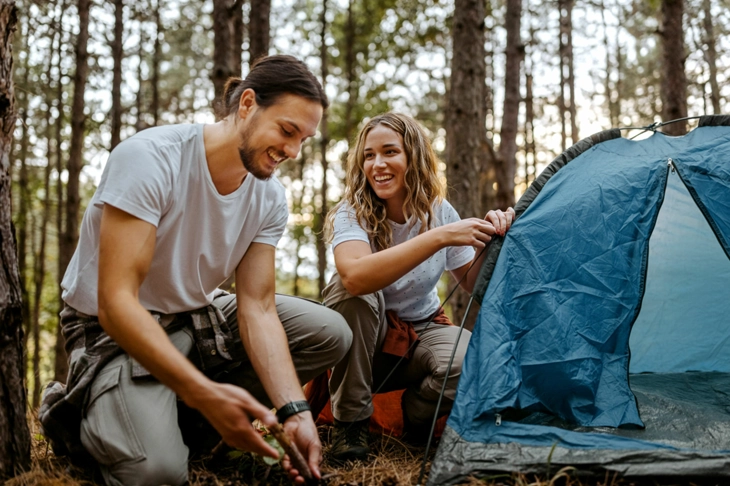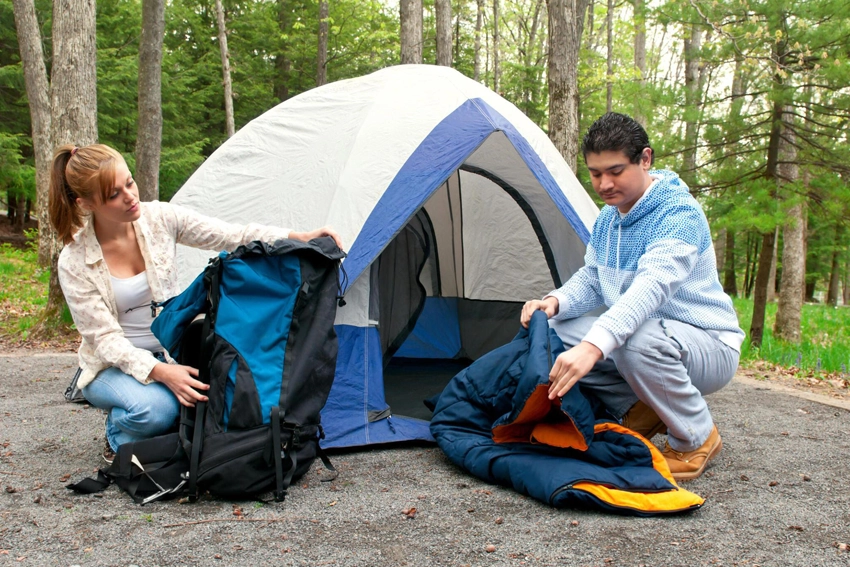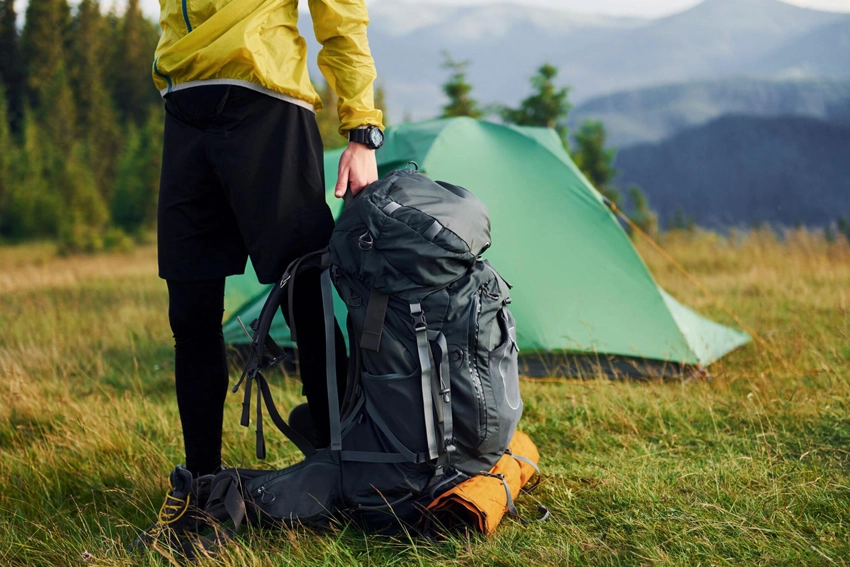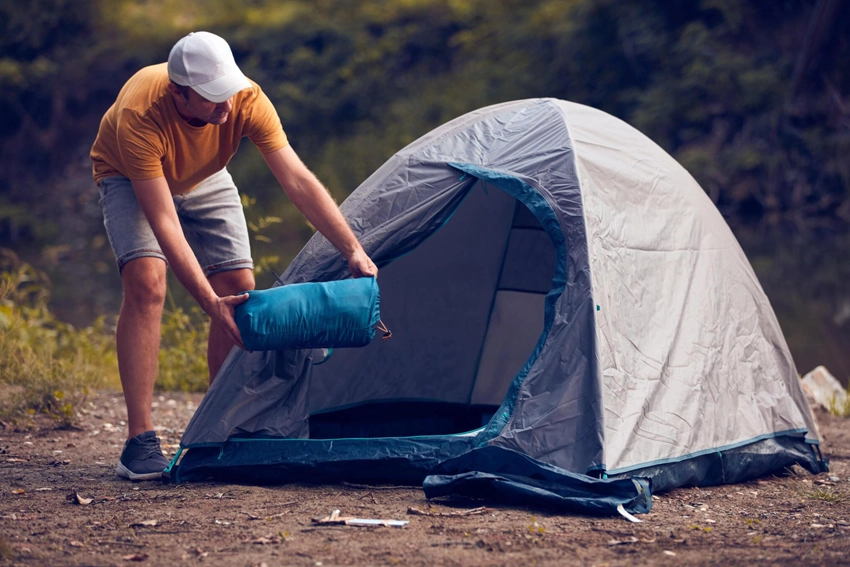Heading into the wild for a backpacking adventure requires thorough preparation and strategic packing, with each item in your backpack playing a vital role. Among these essentials, your tent serves as a crucial sanctuary amidst the rugged terrain.
Mastering the skill of packing your tent is essential for a successful outdoor journey.
This guide will explore the intricacies of packing your tent for backpacking expeditions, encompassing everything from selecting the right tent to organizing its components in your pack. Each step is crucial for maximizing space, minimizing weight, and ensuring easy access to other necessities.
Join us as we delve into the essential considerations and techniques for packing your tent, empowering you to embark on your wilderness adventure confidently and with ease.
Choosing the Ideal Tent

The initial step in efficiently preparing for your backpacking ventures is selecting the ideal tent. Here’s what you should take into account:
Types of Backpacking Tents:
Backpacking tents come in various styles, each offering unique features and considerations. Freestanding tents are self-supporting and simple to assemble, whereas non-freestanding ones require stakes but are typically lighter. Semi-freestanding tents offer a compromise. Consider factors such as weight, interior space, and weather resistance when picking the suitable tent for your requirements.
Weight and Portability:
Backpacking tents vary in weight, ranging from ultralight options for minimalist hikers to more spacious ones with added features and durability. Assess how much weight you’re willing to carry and prioritize tents that strike a balance between weight and functionality. Look for tents that can be packed down compactly to save space in your backpack.
Capacity and Interior Room:
Determine the number of occupants who will be using the tent and choose the capacity accordingly. Remember that backpacking tents are typically snugger than those used for car camping, so opt for one that offers sufficient room for sleepers to rest comfortably without feeling confined. Consider additional features like vestibules for gear storage and interior pockets for organization.
Seasonal and Weather Suitability:
Select a tent suitable for the weather conditions you anticipate encountering on your backpacking excursions. Three-season tents are versatile and suitable for most conditions in spring, summer, and fall, while four-season tents are built to withstand harsh winter conditions, including heavy snow and strong winds. Ensure that the tent’s rainfly and floor are made from durable, waterproof materials to keep you dry during adverse weather.
Ease of Setup and Strength:
Prioritize tents that are easy to set up and dismantle, particularly if you’ll be pitching your tent in challenging terrain or unfavorable weather conditions. Look for features such as color-coded poles, intuitive pole clips, and quick-release buckles for hassle-free assembly.
Additionally, focus on tents crafted from sturdy materials capable of enduring wear and tear from repeated use on the trail. By carefully considering these aspects and selecting a tent that matches your backpacking needs and preferences, you’ll guarantee a comfortable and enjoyable outdoor experience.
Take the opportunity to explore and test various tent models before making a decision, and invest in a high-quality tent that will withstand the demands of your backpacking adventures.
Disassembling and Folding the Tent
Properly dismantling and packing your tent is crucial for efficient storage and maintaining its condition for future trips. Follow these step-by-step instructions:
Remove Stakes and Guy Lines:
Begin by extracting any stakes or guy lines anchoring the tent to the ground. Gently pull out each stake, ensuring there is no tension on the lines, and neatly coil the guy lines to prevent tangling.
Detach the Rainfly:
If your tent features a separate rainfly, disconnect it by unclipping or unzipping it from the main tent body. Lay the rainfly flat on the ground and fold or roll it neatly to reduce bulk.
Collapse the Tent Poles:
Next, collapse the tent poles according to the manufacturer’s guidelines. Most poles are connected by shock cords, allowing for easy folding or collapsing into shorter segments.
Disassemble the Tent Body:
Once the poles are removed, detach the tent body by unclipping or unzipping it from the poles. Lay the tent body flat on the ground and smooth out any wrinkles or creases to facilitate folding.
Fold or Roll the Components:
Commence folding or rolling each component of the tent, starting with the tent body. Fold it in half lengthwise, then into thirds or quarters, depending on its size. Repeat this process for the rainfly, folding or rolling it neatly to match the size of the tent body.
Organize and Secure:
After folding or rolling all components, arrange them logically to optimize space in your backpack. Position heavier items such as tent poles at the bottom of your pack for balanced weight distribution. Utilize compression straps or stuff sacks to secure the tent components and prevent them from shifting during transportation.
Perform Final Checks:
Before storing your tent, conduct a final inspection to ensure all components are properly folded, rolled, and secured. Double-check for any overlooked stakes or guy lines, and inspect the tent body and rainfly for any damage or wear that may require attention.
Packing Your Tent in Your Backpack
When preparing to pack up your tent for your hike, follow these guidelines for efficient packing:
Starting with the Base:
Commence by placing the folded tent body or footprint at the bottom of your backpack. This establishes a sturdy base for your gear and promotes even weight distribution.
Organizing Tent Poles:
Insert the collapsed tent poles vertically along the sides of your backpack, utilizing any internal straps or pockets provided. Ensure they are positioned to minimize discomfort while you’re on the move.
Adding the Rainfly and Extras:
Layer the folded or rolled rainfly on top of the tent body, slotting it between the tent poles and the main compartment of your backpack. If your backpack features external attachment points or pockets, consider securing the rainfly there to conserve space inside.
Keeping Small Items Together:
Place smaller tent accessories such as stakes, guy lines, and repair kits in designated pockets or compartments within your backpack. Utilize zippered pockets, mesh pouches, or gear loops to maintain organization and facilitate easy access.
Compression and Adjustments:
Once everything is packed, utilize internal compression straps or cinch straps to secure everything in place and compress the contents of your backpack. Adjust the straps to ensure even weight distribution and maintain balance as you hike.
Final Checks:
Before hitting the trail, perform a final check to ensure everything is securely packed and balanced in your backpack. Confirm that no stakes or guy lines are protruding, and take precautions to safeguard the rainfly from potential snags or damage.
Remember, proper packing ensures a comfortable and trouble-free hiking experience.
Final Checks and Adjustments
Before setting off on your hike, it’s crucial to conduct a thorough inspection to ensure your tent is securely packed and your backpack is properly adjusted. Here’s what you should do:
Ensuring Stability and Balance:
Check the stability and balance of your backpack by shifting your weight from side to side. Confirm that the weight is evenly distributed and your pack feels comfortable and steady on your back.
Checking Compression Straps:
Ensure all compression straps are tightly secured to compress the contents of your backpack and prevent shifting during your hike. Make any necessary adjustments to maintain a balanced load and minimize movement.
Confirming Accessibility:
Verify that essential items like water bottles, snacks, and navigation tools are easily reachable without unpacking your entire backpack. Arrange items strategically to ensure frequently used items are readily available.
Protecting the Rainfly:
Inspect the rainfly to make sure it’s adequately protected from potential snags or abrasions during your hike. Secure any loose ends or excess fabric under compression straps or with gear loops to prevent damage.
Ensuring Comfort and Fit:
Adjust the shoulder straps, hip belt, and sternum strap to achieve a comfortable and secure fit. Ensure your pack’s weight is evenly distributed and that the shoulder straps don’t cause discomfort.
Verifying Emergency Essentials:
Double-check that crucial emergency items such as a first aid kit, navigation tools, and communication devices are easily accessible in case of emergencies. Familiarize yourself with their locations within your backpack for quick access during critical situations.
Considering Environmental Factors:
Assess environmental conditions like weather, terrain difficulty, and potential hazards before starting your hike. Adjust your gear and pack contents accordingly to ensure preparedness for any challenges you may face.
Performing these final checks and adjustments will help ensure a safe and enjoyable hiking experience.
In Conclusion
As you wrap up your preparations for your backpacking adventure, you’ve honed the crucial skills required to pack your tent efficiently and set off on your journey with confidence. Through careful tent selection, strategic dismantling, and weight reduction, you’ve optimized space and ensured easy access to other necessities.
Before hitting the trail, it’s essential to perform final checks and adjustments to guarantee your gear is securely packed, and your backpack is adjusted for maximum comfort and stability. Take the opportunity to familiarize yourself with your equipment and its contents, staying adaptable to changes in environmental conditions and terrain obstacles.
For moments of relaxation and comfort at your campsite, explore our guide to the top backpacking chairs for a well-deserved break after a day of exploration.
Above all, treasure the solitude and connection with nature that backpacking provides. Whether navigating challenging landscapes, pitching your tent under the stars, or sharing stories around a campfire, each phase of your journey showcases your resilience, resourcefulness, and love for the great outdoors.
As you venture into the wilderness, may your backpacking experiences overflow with unforgettable adventures, meaningful connections, and a deep reverence for the natural world. Safe travels, and may your journey be as fulfilling as the destination itself.





